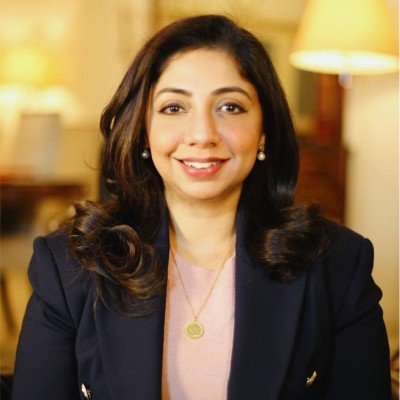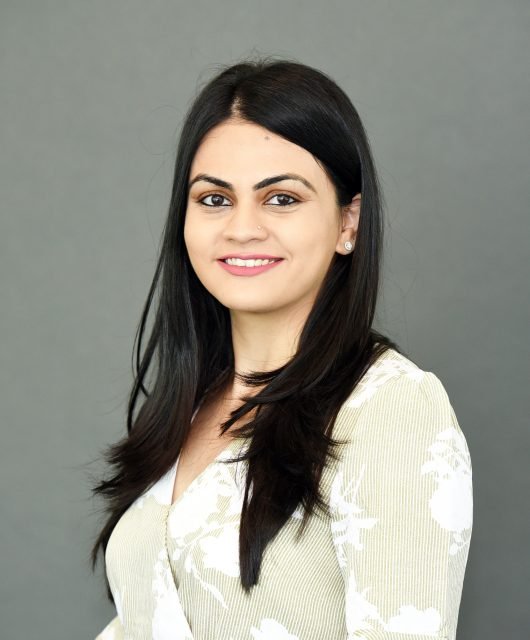Luxury Brands Between The Past And The Future: A Path To Remember And A Future To Keep An Eye On, By Initiative MENA’s Manal Naboulsi
Since I ventured into the Luxury & Beauty world in 2016, Luxury brands have long been synonymous with high-end quality, exclusivity, and sophistication.

I remember, back in the days, how traditional advertising methods such as print ads, billboards, and television commercials were the norm for luxury brands to promote their products. We would start preplanning way in advance of our calendar years to secure prime positions on print and request for a first right of refusal by leveraging previous years exposure and positioning. However, with the rise of digital technology, luxury brands have revolutionized their advertising strategies, embracing the digital landscape to reach wider and more diverse audiences where we had to swiftly adapt and change our media strategies to cope with this fast-revolutionary change.
While traditional advertising methods were effective in reaching a targeted audience, they were limited in terms of reach and engagement. Luxury brands often relied on the exclusivity and prestige associated with their products to create a sense of desirability and allure. Hence we would always look and source out ways of high positioning within media activity that would still allow us to reach a considerable number of consumers while still making their products seem unattainable to the masses, which in turn created a sense of exclusivity and status for those who could afford them.
However, the digital revolution changed the way luxury brands had to approach advertising. The rise of digital media after 2010, marked a significant turning point for the luxury industry. Luxury brands started to experiment with new digital channels such as social media, blogs/fashion and lifestyle websites, and online video. These channels provided a new way for luxury brands to engage with consumers and build relationships with them. At that time, direct buys were still the way-to-go. We would brainstorm on executions, try to leverage influential figures within the industry and come up with a solid media and content strategy to maximize impact and association as much as possible.
Social media platforms such as YouTube, Instagram and Facebook, Twitter and LinkedIn have been particularly influential in the luxury industry. We would recommend these platforms to luxury brands to showcase their products and build a following of loyal fans. Influencer marketing has also become a popular strategy, with luxury brands partnering with social media influencers to promote their products to their followers. This has led to a revolution in the way luxury brands advertise their products.
Then came the era of programmatic advertising which has shifted our buys away from direct deals to more automated, targeted and data centric methods allowing us to leverage a wider range of publishers at one go in more cost-effective way, allowing luxury brands to target specific audiences with personalized messaging, in a highly viewable environment ensuring brand safety and compatibility, offering a spectrum of targeting variables that ensure placements within the most suitable ecosystem to protect brand image and positioning.
In fact, digital advertising has opened a world of opportunities for luxury brands, allowing them to reach a global audience with targeted and personalized messaging. And then came the rise of new social media and entertainment platforms, Snapchat and TikTok to also become key channels for luxury brands to promote their products, these have become main pillars within our media mix where we always stress on the importance of following well-defined content strategies, ensuring a balanced branded and creators/influencers content to further cement the building of meaningful connections with the brands’ audiences. As localization enables creating engaging and informative content that resonates with their target audience.
Not to forget how luxury brands are even further embracing new technologies such as augmented reality and virtual reality to create immersive and interactive advertising experiences. Let’s take the example of Lenses that have been heavily adapted across a wide variety of luxury good, making products more visually appealing on one-self and hence facilitating the decision-making process and shortening the consumer journey online purchase funnel. As a fact, AR is becoming a key form of mobile engagement, elevating consumers experience across Millennials & Gen Z and is expected to massively grow +40% by 2025 in KSA & UAE, as published by Snapchat in 2022.
As we look to the future, the metaverse is set to have a transformative impact on the luxury industry. The metaverse is a virtual world where people can interact with each other and with virtual objects in a fully immersive environment.
Luxury brands are already starting to explore the potential of the metaverse. In 2021, luxury fashion brand Gucci partnered with Roblox, a popular gaming platform, to create a virtual world where players could explore and purchase virtual versions of Gucci products.
In the metaverse, luxury brands will have the opportunity to create fully immersive experiences for their customers. Virtual showrooms and stores will allow customers to live an experience and explore products in a way that is not possible in the physical world. Virtual events and fashion shows will provide new opportunities for luxury brands to showcase their products to a global audience. The first AI Fashion Week is coming to New York’s Spring Studios this month, April 2023. Madeleine Schulz spoke to designers and organisers about bridging technology and creativity.
The metaverse will also provide new opportunities for luxury brands to engage with their customers. In the virtual world, luxury brands can create personalized experiences that are tailored to the individual preferences of each customer. Brands can use data and artificial intelligence to create virtual environments that are customized to each customer’s tastes and preferences.
Within these lines, in 2022, L’Oréal and Meta announced joining forces to launch a startup accelerator dedicated to creativity in the metaverse.
The revolution of luxury brand advertising has been significant, and we have been helping brands embracing digital technology to reach a wider and more diverse audience. While traditional advertising methods will still have a place in the luxury brand landscape, digital advertising and social media are set to become increasingly important channels for luxury brands to promote their products and engage with consumers on a more personal level. As we look to the future, the metaverse is set to have a transformative impact on the luxury industry. Luxury brands will have the opportunity to create fully immersive experiences for their customers, providing new opportunities to engage with their audience and showcase their products. As the world continues to become more digital, the luxury industry must continue to adapt and embrace new media channels to stay relevant and connect with its audience. And brands that fast embrace this change will be best positioned to succeed in the ever-changing world of luxury.





